
Hyperlioceras is an extinct genus of cephalopod included in the ammonitid family Graphoceratidae that lived during the Bajocian stage of the Middle Jurassic. The type species is Hyperlioceras discites
Eugnathides is an extinct genus of prehistoric bony fish that lived from the Oxfordian to the early Tithonian stage of the Late Jurassic epoch. Eugnathides may have been similar to Sphaerodontes.

Cenoceras is an extinct genus within the cephalopod mollusc family Nautilidae, which in turn makes up part of the superfamily Nautilaceae. This genus has been described by Hyatt in 1884. The type species is Cenoceras intermedium, which was originally described by Sowerby 1816 as Nautilus intermedius.

Phylloceras is an extinct genus of ammonoid cephalopods belonging to the family Phylloceratidae. These nektonic carnivores lived from Early Jurassic to Late Cretaceous.

Tarasiiformes is an extinct order of prehistoric ray-finned fish.

Belemnites is a genus of an extinct group of cephalopods belonging to the order Belemnitida. These cephalopods existed in the Early Jurassic period from the Hettangian age to the Toarcian age (175.6–183.0). They were fast-moving nektonic carnivores.

Spirifer is a genus of marine brachiopods belonging to the order Spiriferida and family Spiriferidae. Species belonging to the genus lived from the Middle Ordovician (Sandbian) through to the Late Triassic (Carnian) with a global distribution. They were stationary epifaunal suspension feeders.
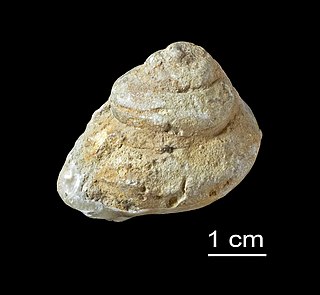
Holopea is an extinct genus of fossil sea snails, Paleozoic gastropod mollusks in the family Holopeidae.
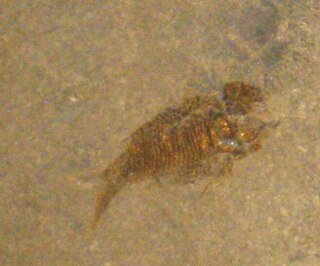
Peltopleuridae were an extinct family of prehistoric bony fish. It is classified with the order Peltopleuriformes.

Lytoceratinae is a subfamily of ammonoid cephalopods that make up part of the family Lytoceratidae.

Virgatosphinctes is an extinct genus of ammonites, which lived in the Tithonian stage of the Jurassic period, from 150.8 to 140.2 Ma. Its fossils have been found in Antarctica, China, Cuba, India, Nepal, Russia and Yemen.
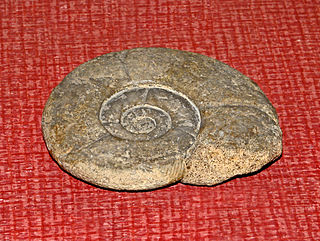
Puzosia is a genus of desmoceratid ammonites, and the type genus for the Puzosiinae, which lived during the middle part of the Cretaceous, from early Aptian to Maastrichtian. Sepkoski defines the range from Albian to Santonian. The generic name comes from the Serbian words "Puž" (snail) and "oce/ose" (axis), gaining its name from the shell's snail-like appearance.
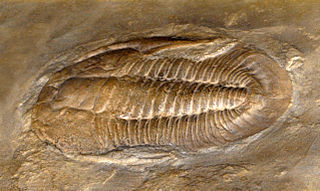
Saukiella is a genus of trilobites of the Saukiidae family.

Panderia is a genus of trilobites in the order Corynexochida.

Prosostoma is an extinct genus of sea urchins belonging to the family Asterostomatidae.

Gaudryceras is an ammonite genus belonging to the family Gaudryceratidae.

Lyelliceras is a genus of ammonites belonging to the family Lyelliceratidae. These cephalopods were fast-moving nektonic carnivores. They lived in the Cretaceous period, Albian stage.
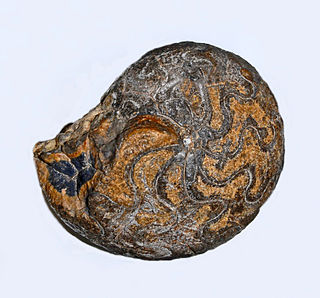
Platyclymenia is a genus of ammonites belonging to the family Platyclymeniidae.
Hannaoceras is a genus belonging to the extinct subclass of cephalopods known as ammonites. Specifically it belongs in the order Ceratitida.

















